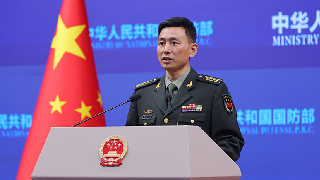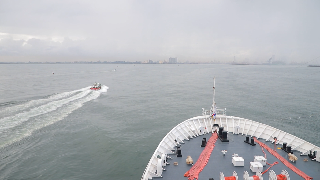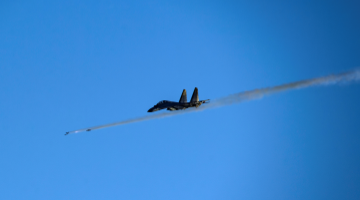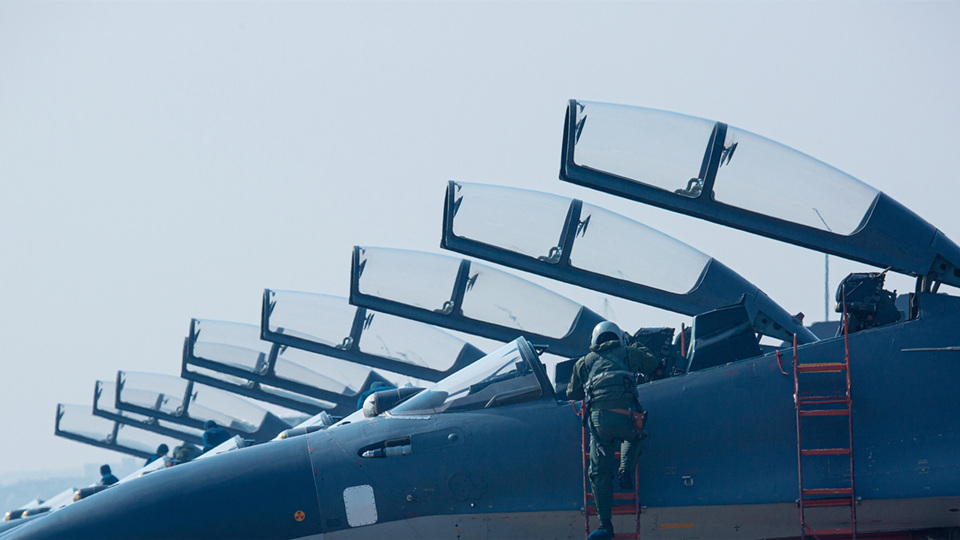By Sui Changquan and Xu Shiwei
Recently, Japan Maritime Self-Defense Force conducted a Passing Exercise (PASSEX) with the Standing NATO Maritime Group 2 (SNMG2) and the Standing NATO Mine Countermeasures Group 2 (SNMCMG2) in the Eastern Mediterranean. The two sides dispatched five vessels for the exercise and conducted training on subjects including maneuvering exercises, communications drills, underwater explosive detection, and so on. Besides, sailors from both sides visited each other's ships in a cross-deck exercise.
According to a participating NATO official, the exercise has improved the interoperability and cooperation ability between NATO and Japan, enhanced the partnership between the two sides, and demonstrated the commitment of the alliance to ensuring the freedom of navigation and addressing regional security threats. Some foreign media commented that the exercise is of great significance in the context of the continuous tension in the security situations around the Mediterranean.
Japan intends to reach three objectives through the exercise.
The first is to actively respond to the military cooperation with NATO. Since the beginning of this year, the security cooperation between Japan and NATO has been enhanced and tended to be institutionalized. Japanese Prime Minister Fumio Kishida has participated in NATO summits for three consecutive years. Meanwhile, NATO members have participated more frequently in joint training activities around Japan. In the first half of this year alone, at least 14 countries have conducted nearly 30 joint training activities with Japan in their surrounding areas. In contrast, Japan seldom participated in joint training activities in Europe. This exercise is considered an active response to the military cooperation with NATO by Japan.
The second is an ocean-going test for Starlink communication. Japan Training Squadron's JS Kashima in the exercise has been equipped with Starlink Internet satellite communication antenna in June this year. Japan has designed a 175-day overseas patrol training mission covering 11 countries to test the communication performance of Starlink and achieve full coverage of the ground, air, and maritime Self-Defense Force as soon as possible. This joint exercise in the Eastern Mediterranean is a part of the mission.
The third is to accelerate the military integration with NATO. Encouraged by the US, the military integration between the US and Japan has been gradually expanding from the two countries to Japan and the allies of the US. This joint exercise involved maneuvering exercises, communications drills, and underwater explosive detection, and so on. It aims to improve the interoperability of the two sides and deepen the military integration between Japan and the US as well as its allies.
Judging from the time, location, and participating forces of the joint exercise, NATO also has its own calculations.
At present, the Russia-Ukraine conflict has reached a stalemate. NATO is deeply trapped in it, so it is urgent to get external forces in to ease its strategic pressure. For the location, the Eastern Mediterranean connects Europe, Africa and Asia, and is an important channel for NATO to transport strategic materials to Ukraine. In terms of the participating forces, the multinational comprehensive maritime force dispatched by NATO is equipped with advanced mine hunters and minesweepers, which can not only provide military support at sea, but also detect, identify and eliminate mines and explosive ordnance.
In conclusion, NATO has two purposes. On the one hand, it attempts to draw Japan into the Russia-Ukraine conflict and relieve the strategic pressure brought by European aid to Ukraine with the help of Japanese funds, resources and military forces; on the other hand, the exercise of combat support forces of NATO in the Eastern Mediterranean can demonstrate its ability to protect important sea route while showing strategic deterrence against Russia.









